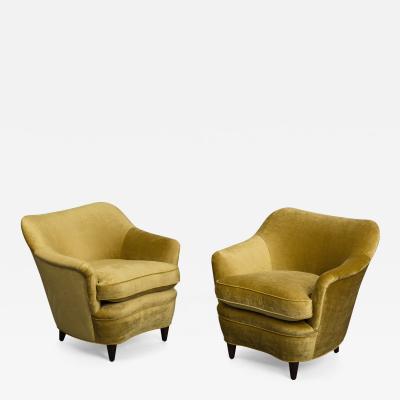All in the Family: Eclectic Collecting Made Portuondo One of the World’s Most Closely Watched Design Dealers
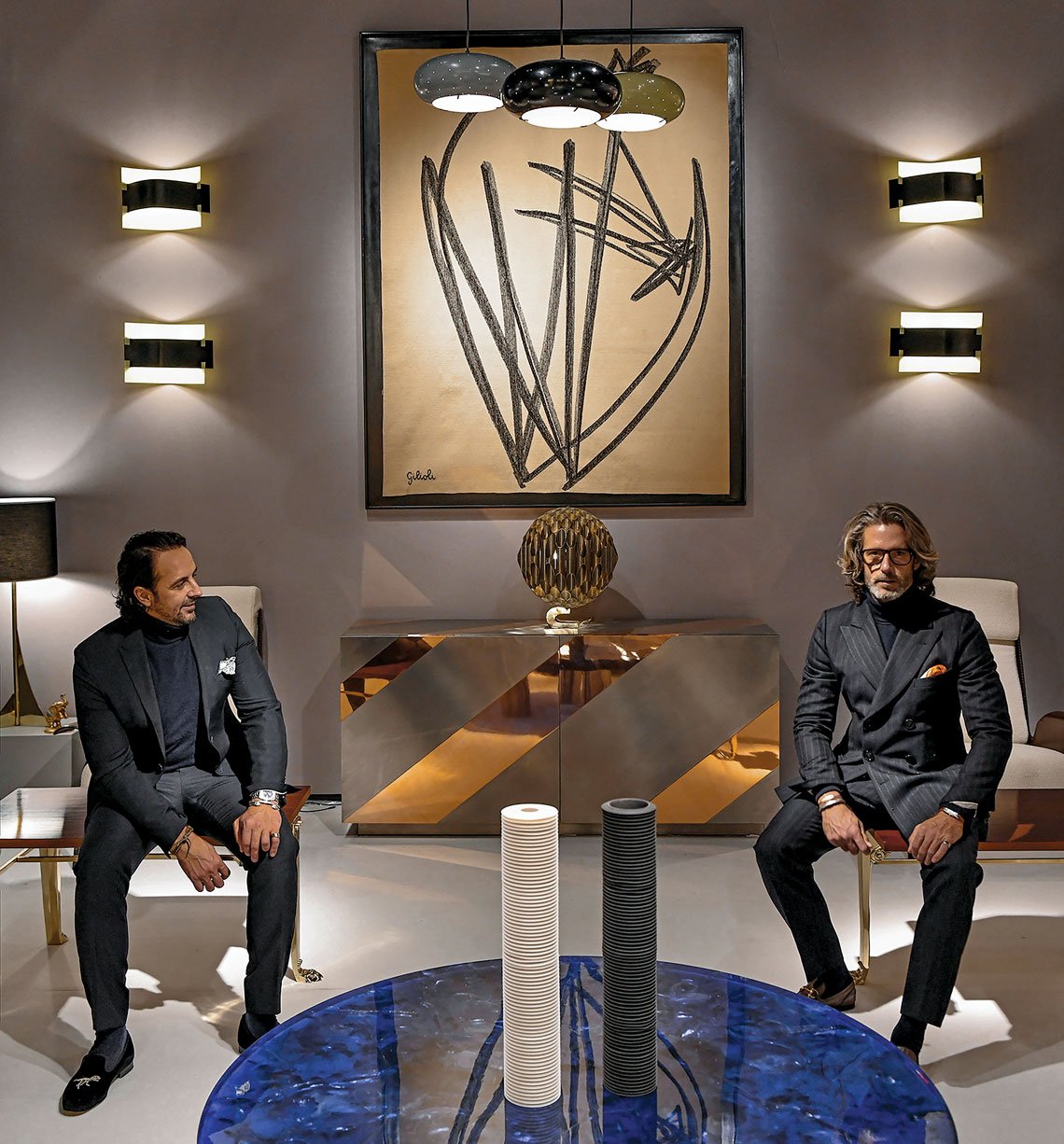 |
Brothers Hugo (right) and Diego (left) Portuondo continue a four-generation family tradition of design-centric businesses with their galleries in New York, London, and Madrid. |
 |
Eclectic Collecting Made Portuondo One of
the World’s Most Closely Watched Design Dealers
Selections shown in this article are available on Incollect.com and The Gallery at 200 LEX at the New York Design Center
Portuondo is operated by brothers Hugo and Diego Portuondo with gallery spaces located in London, New York, and Madrid. The brothers talked with Incollect about the design trade and their lifelong passion for design and decorative arts.
What does your gallery specialize in?
Our preferred era in European and American design spans from the 1940s to the 1970s. While we consistently feature pieces by designers such as Max Ingrand, Jacques Adnet, Angelo Lelli, and Gio Ponti, amongst others, our approach involves ‘eclectic collecting’ rather than aligning with the traditional role of design dealers. We strive to acquire rare pieces that resonate with us personally and that we would proudly display in our homes.
How did you get into the design, art, and antiques business?
We come from a long lineage of antique dealers, both our father and uncle embarked in the 1960s on their journeys as dealers of 17th and 18th-century antiques. Our great-grandparents established Gaston & Daniela in 1875, a fabric company that remains a global leader in fabric design and production to this day. So growing up, we were both steeped in the world of antiques by our father, who took us on buying trips across Europe. Some of our fondest memories trace back to playing in the corridors of antique fairs. As adults, we continued to work alongside him, participating in fairs and honing our skills in spotting unique objects and furniture. After a decade of pursuing individual paths — myself in the realm of private art dealing and Diego as an art photographer — we made the decision to join forces as business partners, determined to continue our family’s legacy.
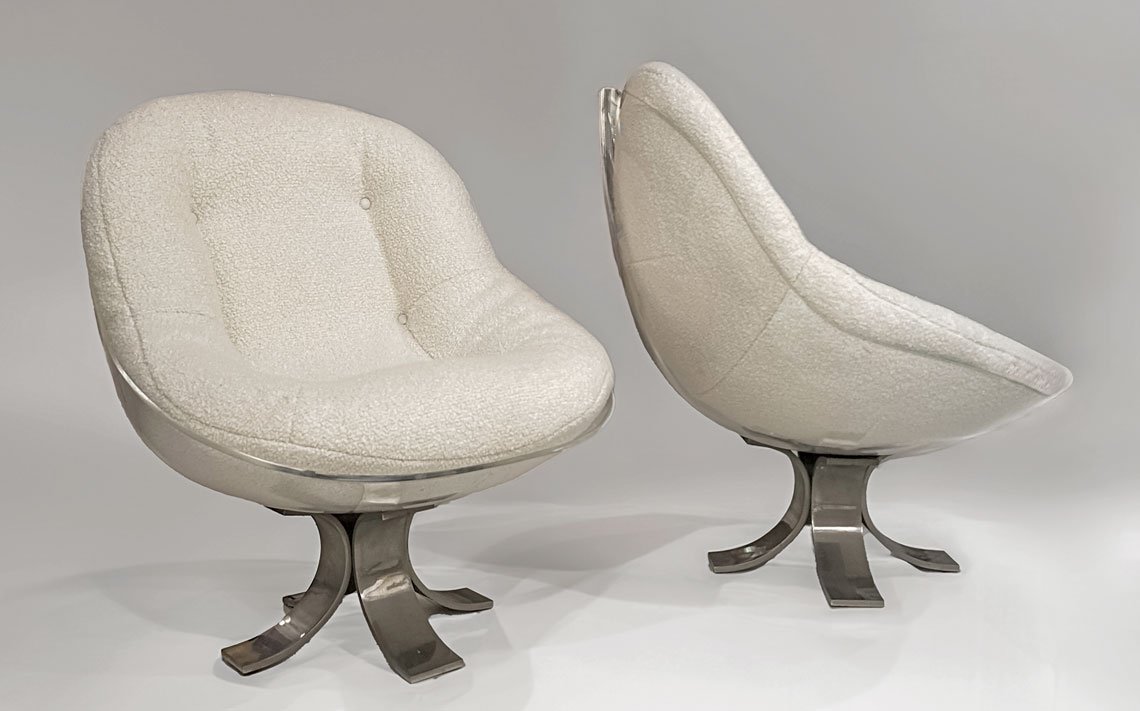 |
Design from the 1960s and ‘70s is enjoying new-found respect for its innovative use of materials and mod-style forms. This pair of rare egg lounge chairs by French designer Michel Pigneres dated 1970 have chrome-plated bases with Perspex (plexiglass) shells, cradling body-contoured cushions. |
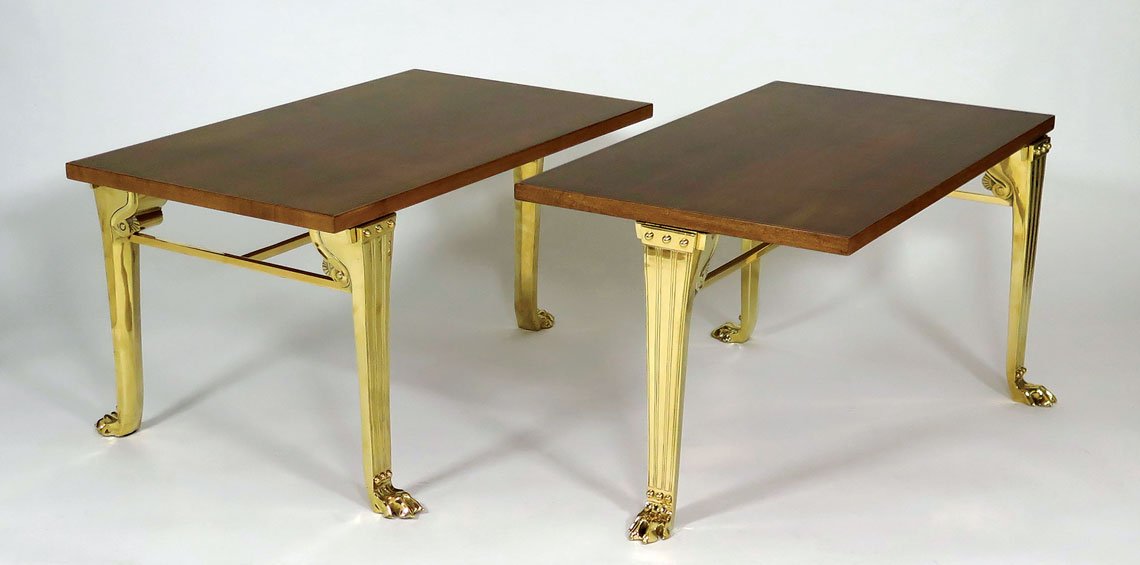 |
‘Trapeza’ three-legged tables by T.H. Robsjohn-Gibbings for Saridis, Athens, circa 1965. This design is a re-creation of a Greek table depicted on a kylix (drinking vessel) from the 5th century B.C. Tabletops are in walnut, supported by three bronze legs with reeded detail terminating in a lion’s paw. British-born Robsjohn-Gibbings was an eminent American designer whose commissions included the creation of furnishings and interiors for scions such as Doris Duke, Alfred Knopf, automobile heiress Thelma Chrysler Foy, and in the 1970s after his relocation to Greece, Aristotle Onassis. |
You have a gallery space in the New York Design Center; what made you decide on that location?
The New York Design Center is a prestigious address renowned among interior designers and collectors nationwide. This strategic location enables us to showcase our items in proximity to our New York-based clients, fostering convenience and accessibility. With a dedicated and adept sales team managing the gallery, we benefit from established relationships with clients. This gives us a strong presence in New York.
 | |
Five-drawer desk and armchair in stitched leather and brass by Jacques Adnet, France circa 1960. French designer Jacques Adnet’s career spanned from the Art Deco era into Modernism, but his most well-known creations were developed during his tenure at the legendary French luxury goods firm Hermès. His leather-clad furniture designs, with trademark immaculate stitching detail and handsome brass fittings, are timeless pieces that exude a sense of dignified, quiet luxury and the ultimate in attention to detail. |
Where do you sell online?
We exclusively sell through portuondo.com (our website) and Incollect. We believe that other platforms impose high commissions on both buyers and sellers, resulting in inflated prices for the end client.
You were both academically trained in the arts — what did each of you study?
During my time at the University in Paris, I pursued a major in Art History, Philosophy, and European cultural studies. From an early age, my passion for art history fueled my desire to study the subject at the university level. I had the privilege of immersing myself in the vibrant art scene of Paris, where I studied and worked for nearly 14 years. My professional journey led me to work for various auction houses in France, where I served as an assistant expert specializing in Old Master paintings.
On the other hand, Diego exhibited exceptional artistic talent during his early school years. At the age of 12, he discovered and developed a profound passion for photography. By the age of 18, he earned a scholarship and secured a spot among the top 20 students in the United Kingdom. His educational journey continued at the Saint Martins School of Art in London, where he pursued studies in art and photography. Subsequently, he continued his career as a fashion and art photographer in Paris.
How does being siblings impact your work — what are some of the advantages and disadvantages?
Collaborating as brothers brings a unique dynamic to our work. With an intimate understanding of each other’s strengths and weaknesses, our professional relationship becomes more seamless. While our tastes may differ, we find value in learning from one another. There are instances when one of us may hesitate to acquire a piece, but through open discussion, we often persuade the other of the merits of the purchase. Of course, being brothers introduces its own set of challenges. The boundaries between family members can be more easily blurred than with a typical business partner.
 |  | |
| Left: A rare prototype oval dining/center table in walnut, brass, and glass, attributed to Gino Levi Montalcini. Italy, circa 1950. Hanging above it is a wool felt tapestry ‘Golden 5,’ circa 1975 by Robert Indiana. From an edition of 30, hand signed and numbered, United States. Right: Max Ingrand rare chandelier model 2338, partly sanded glass and oxidized nickelled brass frame. For Fontana Arte, Italy, circa 1960. | ||
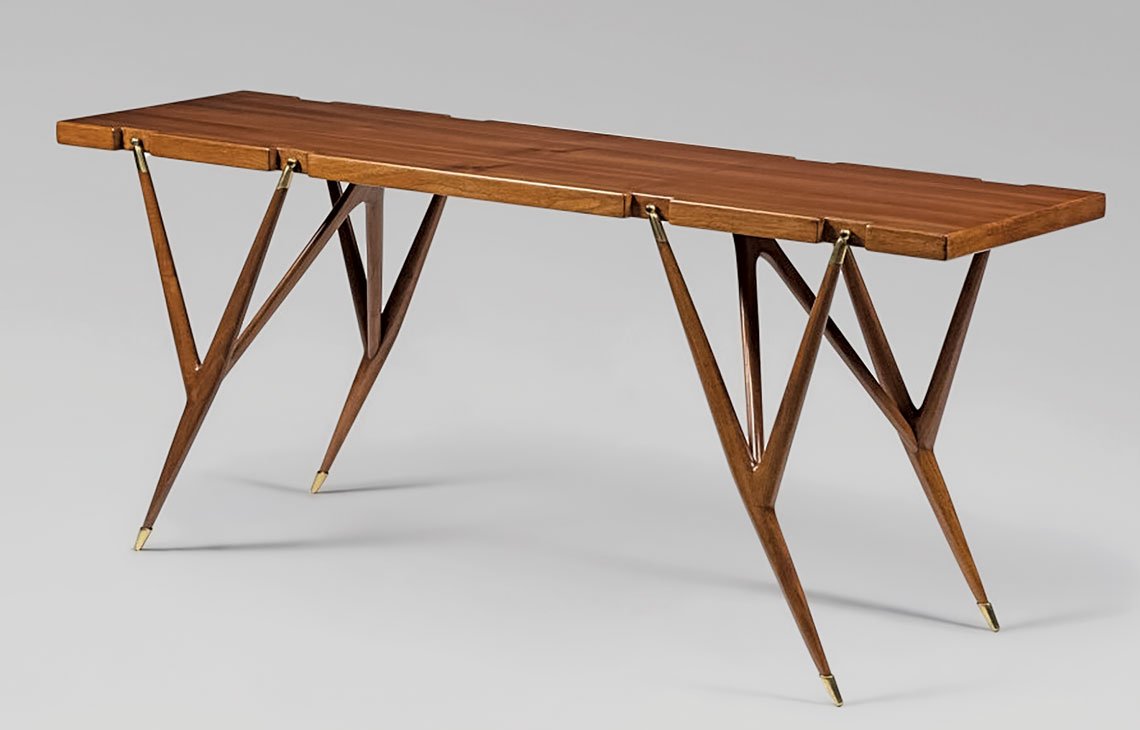 |
Console table in walnut and brass, model 1109 by Ico Parisi for Singer & Sons, Italy, 1951. |
Tell us about the furniture you have on display in the three galleries right now — is there a piece or pieces that you especially admire?
Currently, in London, we are showcasing an impressive collection of limited edition Aubusson tapestries featuring works by Sonia Delaunay, Hans Arp, and Émile Gilioli. This collection is complemented by an array of European lighting and furniture. Notable pieces include a 1930s mirrored chest crafted by Pietro Chiesa and an exquisite octagonal coffee table designed by Pierre Delbée for Maison Jansen. Meanwhile, in Madrid, our setting takes on a more classical tone, where 20th-century design harmoniously coexists with 18th and 19th-century neoclassical antiques and objects. Standout pieces include a steel and black stitched moleskine desk by Jacques Adnet and a chest and coiffeuse by Jacques Quinet, in blue-stitched moleskine made for a luxury French sailing vessel from the 1950s. In New York, our collection boasts some fabulous items, including a striking 1960s Louis XVI-style steel desk by the American designer John Vesey. Additionally, we have a unique Art Deco mirrored sideboard designed for a Parisian apartment in 1934 by Pierre Bacharach.
You have galleries now in London, Madrid, and New York. How does the design market in the United States differ from the market in Europe?
Our three locations attract numerous collectors and interior designers, with a significant portion of our clientele originating from the USA. While the sales market in Europe is robust, in our opinion it is notably less pronounced compared to the American market.
 |
‘Tangent’ curved sofa in green velvet with sculpted wooden feet by Vladimir Kagan for Weiman. Italy, circa 1980. On the wall behind it, Matthew Chambers ‘Fade’ wall sculpture of individually colored and hand-turned clay pieces on wood. Unique piece, United Kingdom, 2022. |
 |
| Conveying the elemental power of rock, Jean-Yves Lanvin’s ‘Block’ sculpture coffee table was inspired by the monolithic stone formations of the mountains and quarries in Tuscany. In 5 segments of mirror-polished cast brass with a slightly wavering surface that casts reflections similar to dappled sunlight. Finely rendered naturalistic fissures and light etching add to the organic aesthetic. In a limited edition of 24 + 4 AP. 2023, France/Italy. |
 |
| A unique piece specially commissioned for a private residence in Milan, Italy, this rare bar disguised as a fireplace was produced by Fontana Arte. Attributed to Italian architect, prolific designer of elegant lighting and furniture, and Fontana Arte co-artistic director (along with Gio Ponti) Pietro Chiesa. Enriched by a luscious material palette of lacquered wood, etched glass, black opaline glass, mirrored glass, and brass and fully outfitted with revolving doors, glass shelves, and a drop-down front panel revealing an illuminated interior. Italy, circa 1935. |
You have moved recently more into 20th-century design. What makes 20th-century design special?
The enduring significance of 20th-century design lies in its innovative spirit, iconic creations, and adaptability to contemporary tastes. Movements such as Modernism boast functionality and simplicity and have left a lasting imprint on design aesthetics. The timeless pieces by iconic designers and architects from this period also seamlessly integrate into many modern interiors. Quality craftsmanship, sustainability, and just the historical and cultural value of specific designs contribute to the ongoing allure of 20th-century design. Its sustained popularity is bolstered by a thriving collector’s market, emphasizing the timeless appeal of pieces that capture the essence of their era while remaining relevant in today’s dynamic design landscape.
What fairs or shows do you exhibit at internationally and why?
In 2023, we participated in several internationally renowned fairs and shows, including The Winter Show and Salon Art + Design in New York, PAD London, PAD Paris, and the Treasure House Fair in London. We selected these events because they attract a diverse audience of international collectors and interior designers. Additionally, exhibiting at these fairs allows us to curate unique atmospheres distinct from our gallery space, as we specifically acquire pieces for each fair booth.
Who among contemporary designers do you admire?
We generally do not deal in contemporary design however we are proud to represent Jean Yves Lanvin, the grandson of the renowned French fashion designer Jeanne Lanvin. His creations are distinguished by their exceptional sculptural quality, skillfully merging art and design. Among the standout pieces that captivate both our clients and ourselves are his Block table and Block console. These creations employ and draw inspiration from the natural marble of Tuscany.
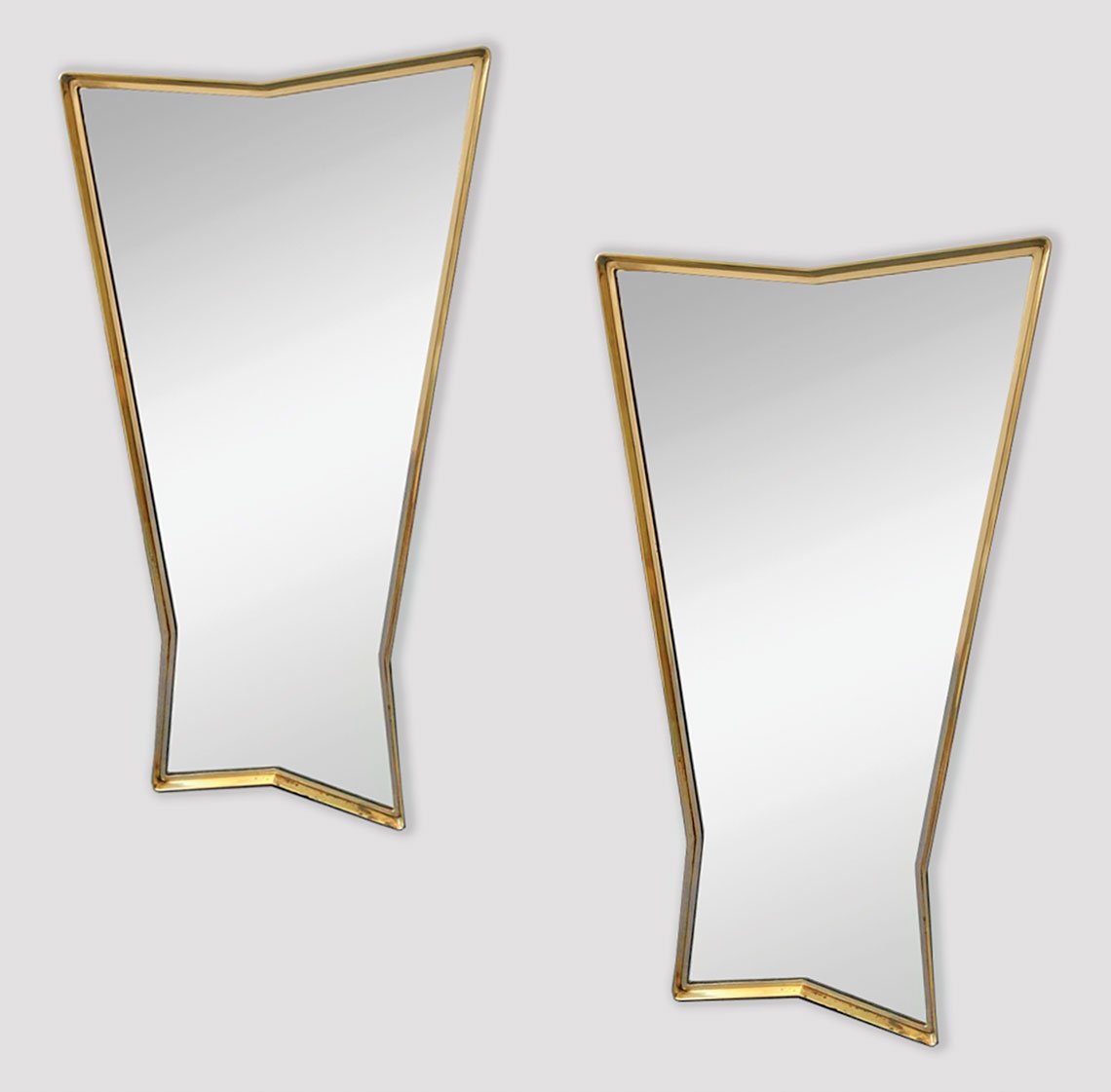 | 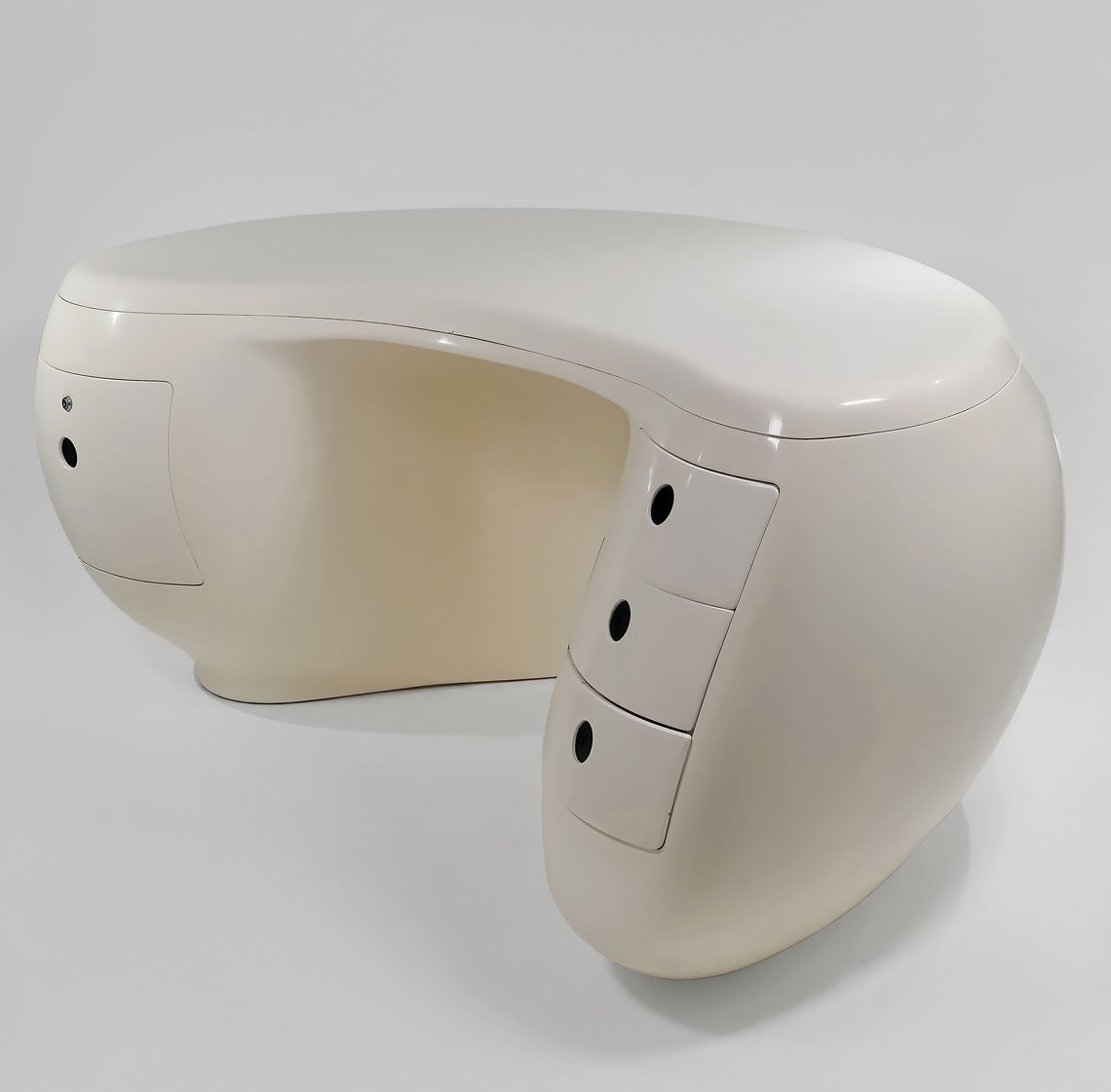 | |
Left: Pair of brass framed angular form mirrors with original mirrored glass plates by Osvaldo Borsani, Italy, circa 1950. Right: Molded fiberglass ‘Boomerang’ desk by Maurice Calka for Leleu-Deshays. This rounded, sculptural, decidedly futuristic design was available in 41 colors and graced French president Georges Pompidou’s office in the Palais de l’Élysée. France, circa 1969. | ||
What furniture and lighting designers are you seeing the most market interest in right now?
We are currently observing significant market interest in Italian and French designers, particularly names like Gio Ponti, Max Ingrand, Giuseppe Ostuni, Maurice Calka, Jacques Adnet, and Bernard Govin. These designers continue to capture the attention of collectors and enthusiasts alike.
Are there artists or designers you believe deserve more attention?
We both have a penchant for collecting pieces spanning from the 17th century to the present day. While there are remarkable pieces from every period, our primary focus lies in the 20th century, with a special appreciation for often overlooked objects from the 1940s and 1950s. One artist deserving of more recognition is the contemporary English ceramist Matthew Chambers, who we are pleased to represent. His sculptures embody symmetry, rhythm, serenity, elegance, and perfection, creating pieces of abstract beauty and wonder. His artworks are in major collections and museums worldwide, such as the V&A and the Royal Academy of Arts in London.
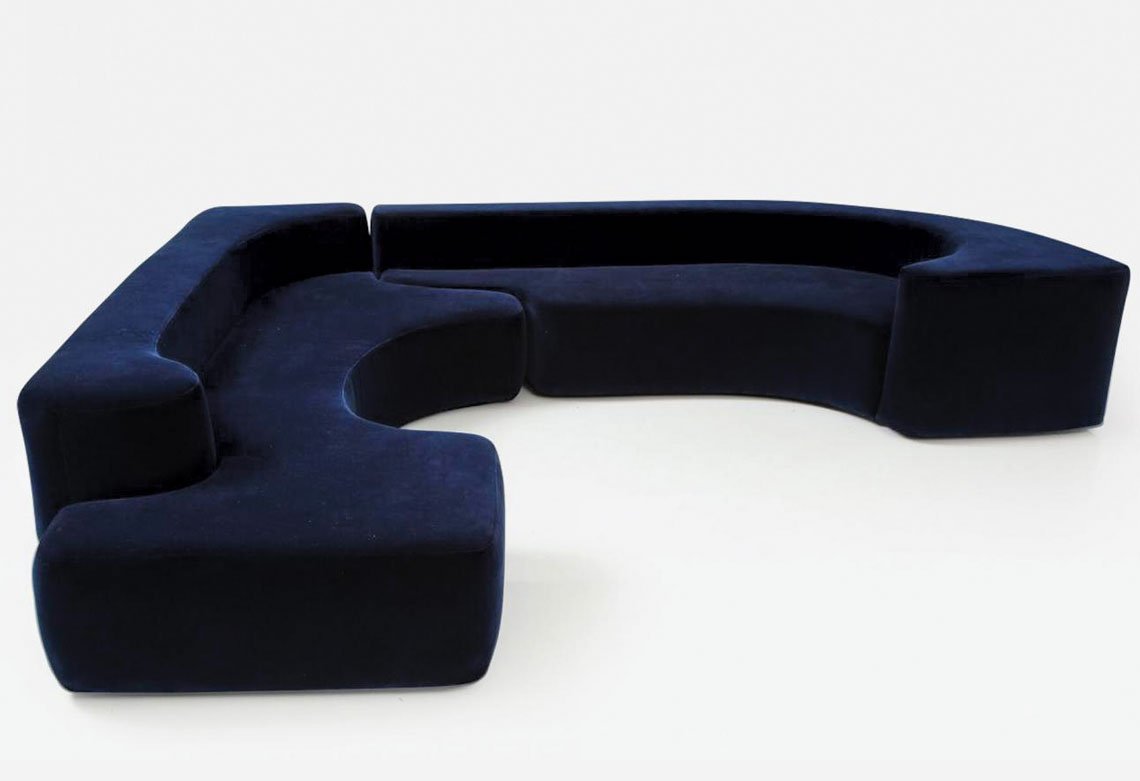 |  | |
Left: ‘Lara’ modular sofa by Roberto Pamio, Renato Toso & Noti Massari. Two interlocking modules in deep blue velvet upholstery. Italy, circa 1965. Right: John Vesey neoclassical desk in the Louis XVI taste, a rare smaller version. Steel with gilt bronze trim and an iconic profile with elegant fluted column supports. The top of the desk has a leather inset with gilt trim and the drawers are lined in a luxurious moss green velvet. Vesey designed his pieces to work with antiques, but their clean lines and perfect proportions work equally well in contemporary interiors. United States, circa 1965. | ||
What is the best thing about being a design dealer?
We both chose our careers out of a passion for the subject and love what we do and, consequently, we cannot envision pursuing another path in our lives. As design dealers, our profession offers us versatility, allowing us to engage in diverse activities. We actively assist and advise clients in building art and design collections. Additionally, we have undertaken various private interior design projects in London, Madrid, and Ibiza for our clients.
 |
Discover More From Portuondo on Incollect
 |
















